Vimar Signalling Devices


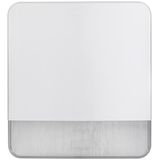
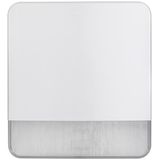


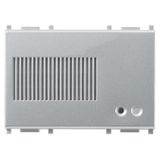
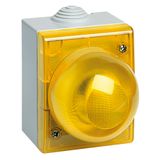
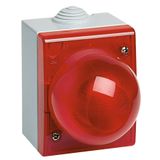
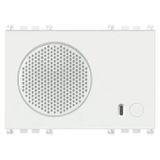

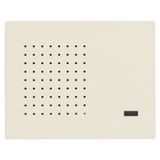


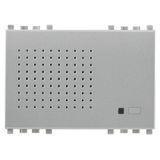
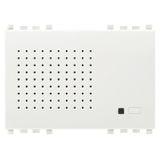
Install teams keep signaling simple: one ecosystem for panels, plant rooms, and public areas, with clean DIN layouts and fixtures that match the same IP/IK rules as the rest of the project. Here’s how the Vimar lineup breaks down so you can order by range, voltage, and mounting—no guesswork.
vimar signaling devices assortment and use cases
You’ll find panel LEDs, tower/stack lights, wall beacons, sirens, combined sounder-beacons, and buzzer modules for machinery, corridors, and plant skids. We stock vimar signaling devices by voltage (24 V DC, 110/230 V AC), color set, and mounting so maintenance can swap like-for-like without re-testing circuits.
vimar optical and acoustic indicators ranges and form factors
Compact modules sit on 22/30 mm panel holes or DIN adapters; larger housings cover wall/ceiling with bayonet bases and cages. Combined units simplify wiring where both light and tone are needed. Projects use vimar optical and acoustic indicators to reduce device counts while keeping alarm logic readable on drawings.
vimar light signal units stack lights and panel indicators
Stack columns take red/amber/green/blue/white segments with steady, blink, and rotating effects; panel types include high-intensity LEDs with clear, colored, or smoked lenses. Spec vimar light signal units by lens diameter (30/50/70 mm), luminous intensity class, and flash rate (0.5–2 Hz) so operators can read states from distance.
vimar sound signaling devices tones and sound pressure
Multi-tone sirens offer 8–32 tone sets (EVAC, industrial, medical) with 65–110 dB(A) at 1 m and adjustable output; piezo buzzers handle local panels at 75–90 dB(A). Engineers select vimar sound signaling devices by SPL target, frequency band, and duty cycle to meet site noise floors and audibility rules.
vimar alarm beacons VAD coverage and colors
Xenon-style flash or high-output LED strobes in red/amber/clear/blue with candela ratings and coverage tables for open/ceiling/wall mounting. Where evacuation signaling applies, choose units with published VAD geometry. Schedules call up vimar alarm beacons with lens color, candela class, and synchronisation so floors stay in step.
vimar warning indicators mounting and ingress protection
IP40 for panels, IP54/65 for plant corridors; IK07–IK08 where impacts are likely. Bases include shallow/deep with side or rear entry, plus stainless guards for sports halls and warehouses. Crews catalog vimar warning indicators by IP/IK, base type, and cable gland thread to keep fittings consistent.
vimar visual and audio signals integration with control gear
Inputs accept 24 V DC, 110/230 V AC, or low-current logic via interface relays; options include KNX/DIN drivers and open-collector sync lines for strobe timing. On AHUs and gates, status feeds trend to BMS. Panels list vimar visual and audio signals alongside contactor auxiliaries so E-stop, trips, and run states map cleanly.
Technical specifications and standards that matter
Supply 24 V DC and 110/230 V AC, 50/60 Hz; inrush and steady currents listed per mode. Light output per candela/lumen tables; flash/rotate rates selectable. SPL per ISO 7731/EN 457 guidance; ingress per IEC 60529; impact per IEC 62262. Fire-alarm roles reference EN 54-3 (audible) and EN 54-23 (visual) where applicable. EMC to EN 61000 series. Terminals: 0.5…2.5 mm² Cu, strip 8–10 mm, torque 0.4–0.8 Nm (device label prevails).
Applications and compatibility
• Plant and machinery: tower lights for machine states; siren-beacons for faults; panel buzzers for operator prompts.
• Buildings: corridor strobes for evacuation; low-profile LEDs for service rooms; synchronized strobes to avoid confusion across zones.
• Parking/logistics: IP65 beacons with guards; high-SPL horns at shutter doors; status repeaters to external facades.
All devices align with Vimar DIN gear, enclosures, and Eikon/Arké/Plana plates for uniform trim and labeling.
Assortment map for procurement
• Panel indication: 22/30 mm LEDs, buzzers, test switches.
• Stack columns: 3–5 segments, 30/50/70 mm, steady/blink/rotate, with sounder tops.
• Wall/ceiling beacons: LED strobe, fixed or synced, clear/red/amber/blue lenses.
• Sirens and horns: multi-tone, 65–110 dB(A), selectable tones, IP40/54/65.
• Sounder-beacons: shared base to cut wiring time; sync input; monitored versions for supervised loops.
• Accessories: cages/guards, deep bases, gaskets, sync modules, label windows.
Selection criteria for B2B buyers
- Define function per zone (status, warning, evacuation) and pick light/tone combination.
- Set environment: IP/IK class, temperature, cleaning regime; add guards where needed
- Fix electrical interface: voltage, current budget per circuit, monitored line requirements.
- Choose visibility/audibility: candela class, lens color, SPL at receiver positions; verify with coverage tables.
- Document mounting and wiring: base type, gland thread, sync/buzzer control, and labeling so crews repeat the same outcome floor to floor.
Advantages of working with Bankoflamps
Your commissioning windows set the pace. We issue project-specific pricing, near-hour quotes by EAN/MPN, and show live EU stock before rooms are released. The portal lists lead times, shipment tracking, and downloadable price lists with validity dates you can plan around. Trusted clients can use post-payment up to 30 days. We consolidate partials so beacons, sirens, towers, bases, guards, and labels arrive route-bundled by riser. Your account manager cross-checks voltage classes, candela/SPL tables, IP/IK, EMC notes, and wiring diagrams against your drawings—keeping deliveries site-ready across France, the Baltics, Germany, Spain, Italy, Belgium, and the Netherlands.